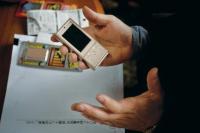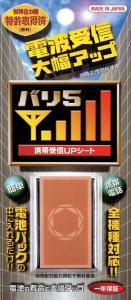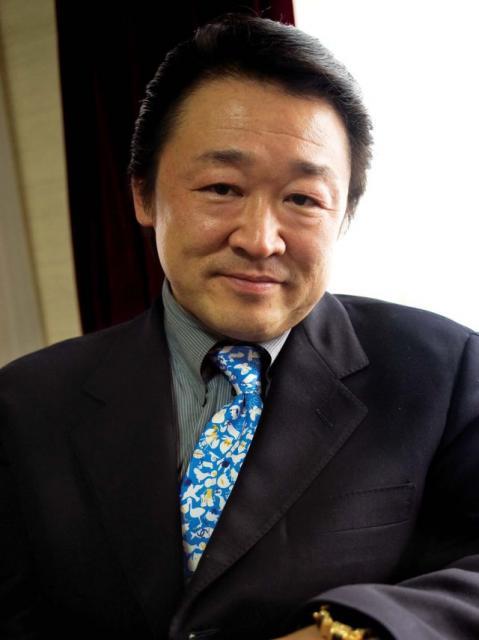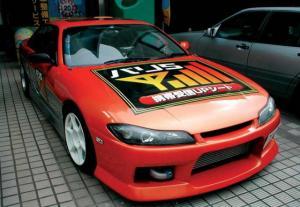Sending the Right Signals
By Joseph Greenberg

In the Japanese consumer market, without the right marketing, even the most brilliant products and original ideas can fall flat on their face. J@pan Inc spoke to Kiyofumi Someya about marketing in Japan, and specifically of the hurdles facing small-medium enterprises.
Marketing in Japan
Last summer, a very strange product stood in the fridges of convenience stores across Japan for a period of about one month—cucumber Pepsi. Bloggers and media picked up on this curious item and it quickly emerged in headlines around the globe.
Why did Pepsi pick Japan for this experiment? In many ways the convenience store is a microcosm of the Japanese market. A remarkable number of new products are tested on the shelves. Rather than manage one brand and one line, Japanese marketers tend to fire out new products at a much higher rate than in other commercial cultures. It is then up to the consumer’s choices whether they pick up enough sales to survive: if they do they stay, if not they are removed.
Much is made of this when it comes to foreigners setting up in Japan but domestic companies find the process equally harsh and confusing. For new businesses and SMEs one of the biggest challenges can be that because of the volatile nature of the market, and the short margins allowed by stores to wholesalers to test out their products, expensive and all encompassing advertising campaigns are necessary if the product is to become popular. For those unable to afford the major ad agencies, Dentsu or Hakuhodo, becoming well known can be an unexpected and painful hurdle to get over. This can be a source of frustration for inventors or entrepreneurs with a product they see as a definite winner.
There are however some smaller agencies and the evolution of marketing techniques and know-how is definitely out there, if you know where to look.
Getting the message out

Back in 2001, an inventor in Nagoya thought he had struck gold. He had designed and successfully patented a thin strip of copper that when placed in the battery case of a mobile phone, significantly boosts reception. Although the major cell phone carriers in Japan do a relatively good job of providing decent signals out in the countryside, in basements and on smaller islands (of which Japan has many) there are still many users frustrated by poor signal. Furthermore, as many of us know, some devices just don’t seem to get decent reception. Critically, it is signal that also impacts on battery life—when the phone searches for an emitter it uses battery power, the harder it searches, the more battery life it takes. Therefore using the copper strip effectively increases battery life by 1.5 times as well as improving reception.
However, largely due to the marketing difficulties outlined above, the inventor couldn’t get his product off the ground commercially. He had being trying to sell it in convenience stores and tried various different ideas. However, after three years he gave up and decided to seek professional help; it turned out to be one of the best moves he ever made.

Without the level of funding necessary to approach one of the larger agencies, the inventor found a smaller outfit based out of Saitama called Kakudai. The president of the company, Kiyofumi Someya, was impressed by the technology and quickly figured out some of the problems. He told us “Nobody would have wanted to buy it marketed as it was. Even the name was inappropriate.” The name given was Fukkatsu- kun, meaning “reviver” but, as Someya explained, the key selling point of the product was not that it revived signal or battery power—it boosted the former and prolonged the latter. Therefore, it didn’t make sense to market it as something that revives battery particularly when people can easily buy portable chargers. The value to the consumer is that no matter how good their model of phone, for a small price they can greatly improve its efficiency.
The name was one of the first things that Someya changed. Playing on a colloquial expression for “extremely” (bari bari) he settled on Bari5 (pronounced barigo) and created a logo that instantly tells the consumer the product is connected to signal. Normally signal on Japanese phones is represented by three bars and bari-san (bari3) is a popular term meaning full strength reception, bari5 then is instantly suggestive of very good reception, hence the five bar logo too. Beyond cleaning up these basic errors, Someya implemented a ferocious marketing strategy. “My goal was to associate the product with anything that was hot—anything that was cool.” For example, he bought and decorated a ‘Drift Car’ (very much in vogue with Japanese youth) with the logo that he drove around the trendy districts of Harajuku and Omotesando, parking it in various locations with the bonnet up, drawing the eyes of the passers by from the billboards above. Additionally, he got onto the big TV screens on the Shibuya crossing above Starbucks and for total exposure, even launched an advertising campaign on the handholds dangling down on trains on the subway. Another interesting change was to double the price from ¥1000 to ¥2000—“customers are more likely to trust a product if it is in the ¥2000 range. It is still good value and of course, adverts need to be paid for. But rather than charge my clients astronomical prices, I factored the extra costs into the strategy.”
Bari5 is now sold in major retail outlets across Japan such as Tokyu Hands and Don Quijote—sales figures for last year were up to 240,000 and the product is also proving successful in Mexico. Someya now has his eyes on markets in Europe and the US.
 Kiyofumi Someya
Kiyofumi Someya
From brill cream to branding
Surprisingly, although Kakudai’s history stand them in good stead for life as a marketing company, the work with Bari5 has been Someya’s first project of this kind. Kakudai is a family business that was founded in 1753. The founder was a trader who specialized in selling oil that was used to make candles or hair pomade that was the fashion of the time, the Edo period (its use is now largely limited to sumo wrestlers). Over the years the company has always been connected to retail but has evolved to suit the times. Thus, in the postwar period, Kakudai transformed into a wholesaler for toiletries, working with the major distributors and brands such a Kao, Unilever, Shiseido and P&G.
"I was sure that some of the international marketing strategies I had learned could be adapted and adjusted to work well in Japan"
During the 1990s the business model shifted again and Kakudai was a pioneer in the importing of ginseng and Chinese medicines into Japan to meet the growing demand of the alternative/Chinese medicine market. Someya’s father was then company president, and many family members including Kiyofumi were involved in the business. In 2000 however, Someya senior passed away and his son took over the running of the company. Sadly, he found the company had a negative cashflow to the tune of some ¥20,000,000 (roughly US$190,000). Determined to turn this situation around, Someya junior put to use all of his skills, knowledge and experience. He had studied marketing in the US when he was younger and was struck by the lack of formal techniques and marketing specialist companies in Japan on his return. “I had reverse culture shock in various ways but I was sure that some of the international marketing strategies I had learned could be adapted and adjusted to work well in Japan,” he explained. Evidently, he has found practical uses for the techniques he learned and has also been published, writing about hypnosis in a book on marketing techniques.
 Being seen around town in style—the Bari5 ‘Drfi t Car’ -- Click on image for enlargement.
Being seen around town in style—the Bari5 ‘Drfi t Car’ -- Click on image for enlargement.
In working with Bari5, Someya was able to exploit his connections in retail and in the media. As a result of his own personal experiences and the company’s heritage he was able to remodel the business. He has now drawn in other clients such as an energy saving LED manufactured by a company called GMOT, “they hold the patent for a small diode made of acrylic that cuts electricity builds in half while actually being brighter than conventional lighting—I see potential for them everywhere from offices to airports.” GMOT have already secured involvement with the G8 Summit in Hokkaido and with a bit of investment will be ready to go global. Someya has also expanded into IR territory with this project helping them to raise investment for the company to launch internationally.
When asked what advice he would give to foreigners trying to market their product in Japan, his view is characteristically realistic: “The key thing is that it depends on the product, obviously having someone on the ground who understand the market and has the contacts is immensely valuable but good marketing will take account of the product and the industry as much as the nature of the consumer.”
With the success of Bari5 in his portfolio Someya is confident that he can take on other projects and has even started to do more marketing for Chinese medicines anxious for the company to build on its past connections and experiences.JI
Contact details
Kakudai
Tel: 03-4550-2929
info@japaninc.com
www.kakudai-net.com






Comments
Anonymous (not verified)
June 21, 2008 - 07:39
Permalink
Congratulations to Mr.
Congratulations to Mr. kiyofumi Someya! Persistance and determination Great Way to go.
Where can we buy this great battery buster in USA?